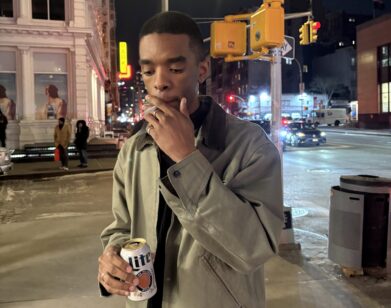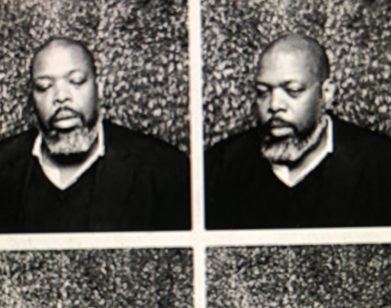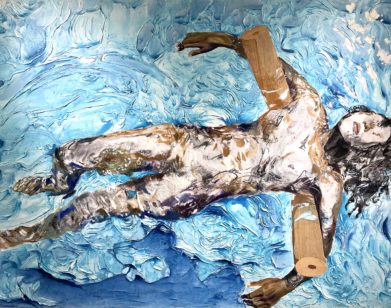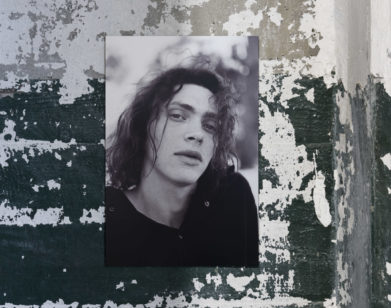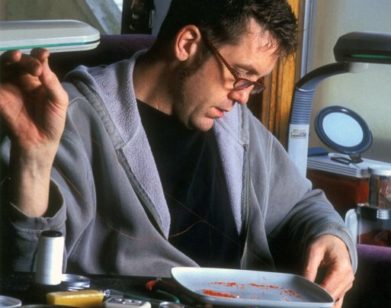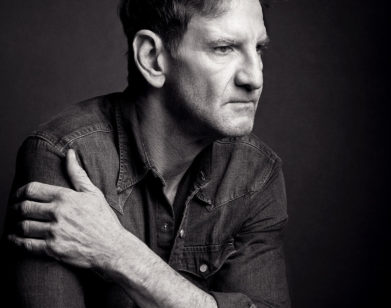art!
The Painterly Photography of Marcus Maddox
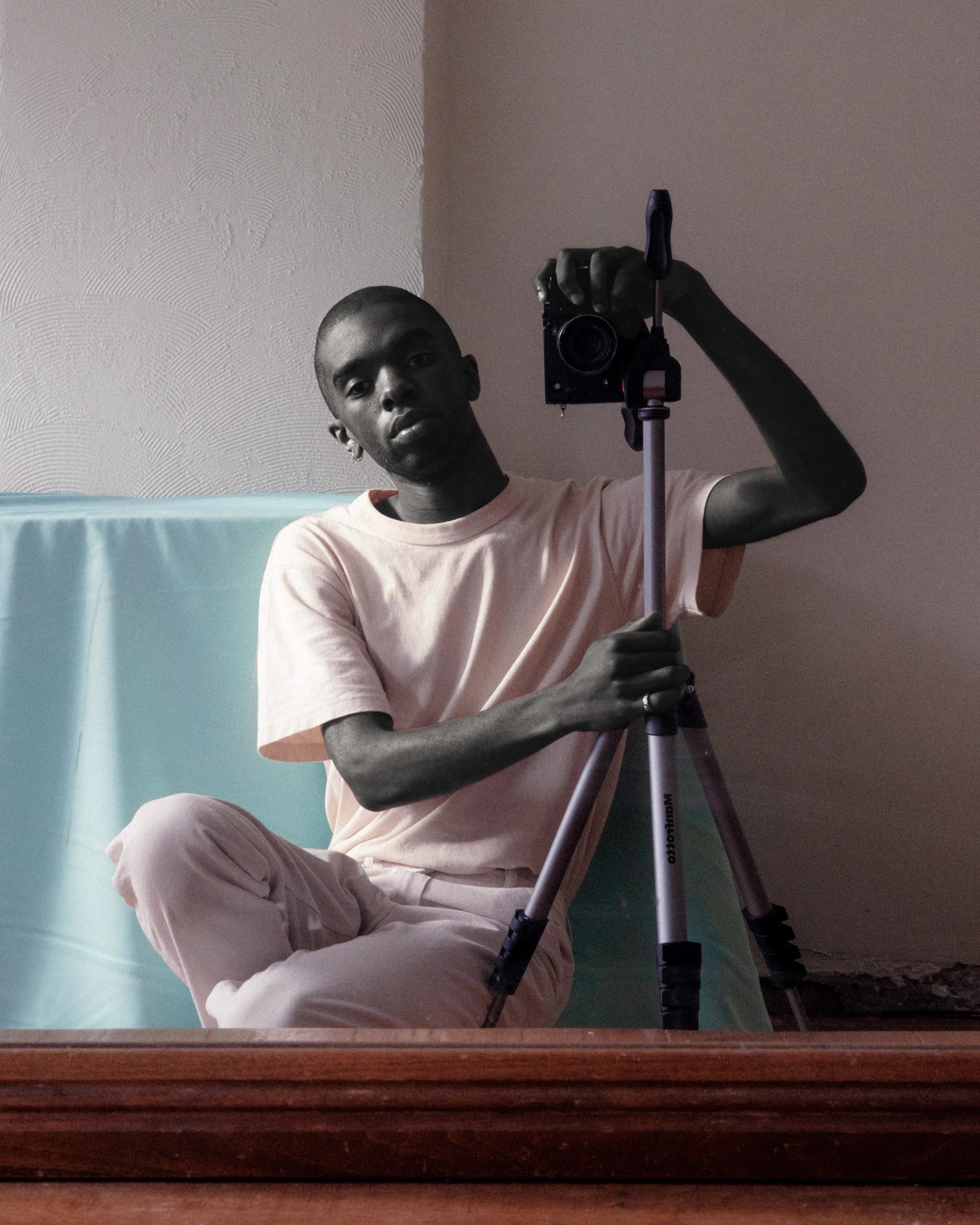
For the past four years, Marcus Maddox has focused his photographic efforts on blurring the lines between painting and photography. With the work of Black painters like Alex Gardner, Jon Key, and Kerry James Marshall to guide him, the Tennessee-born photographer set about producing photographs with the formal composition and simplified color palettes of his favorite painters. “The stark Black figurative representation—the unapologetic Blackness in their work—that’s huge to me,” he says, “I wanted to translate that idea into photography.” The result is Figures of Color, a series of photographs of Black models set against crisp colorblock backdrops that, with their rich hues and overwhelming size, feel eerily unreal. The subjects in Maddox’s work may look like professionals, but the artist is focused on inviting all kinds of people into his studio practice. “Connie was in a nursing home in New York when I photographed her, and it was the moment when the series broke away from fashion.”
This week, the Philadelphia-based photographer returns to his hometown to present his larger-than-life works at Nashville’s Red Arrow Gallery. Rather than savoring the moment, he’s busy planning his next series: “It’d be cool to emulate other painting styles, while retaining the aesthetic that I’ve been working on,” he says, “I guess I’m still in the dreaming phase.” Ahead of his forthcoming solo show, Maddox took a moment to reflect on the photographs on view this October.
———
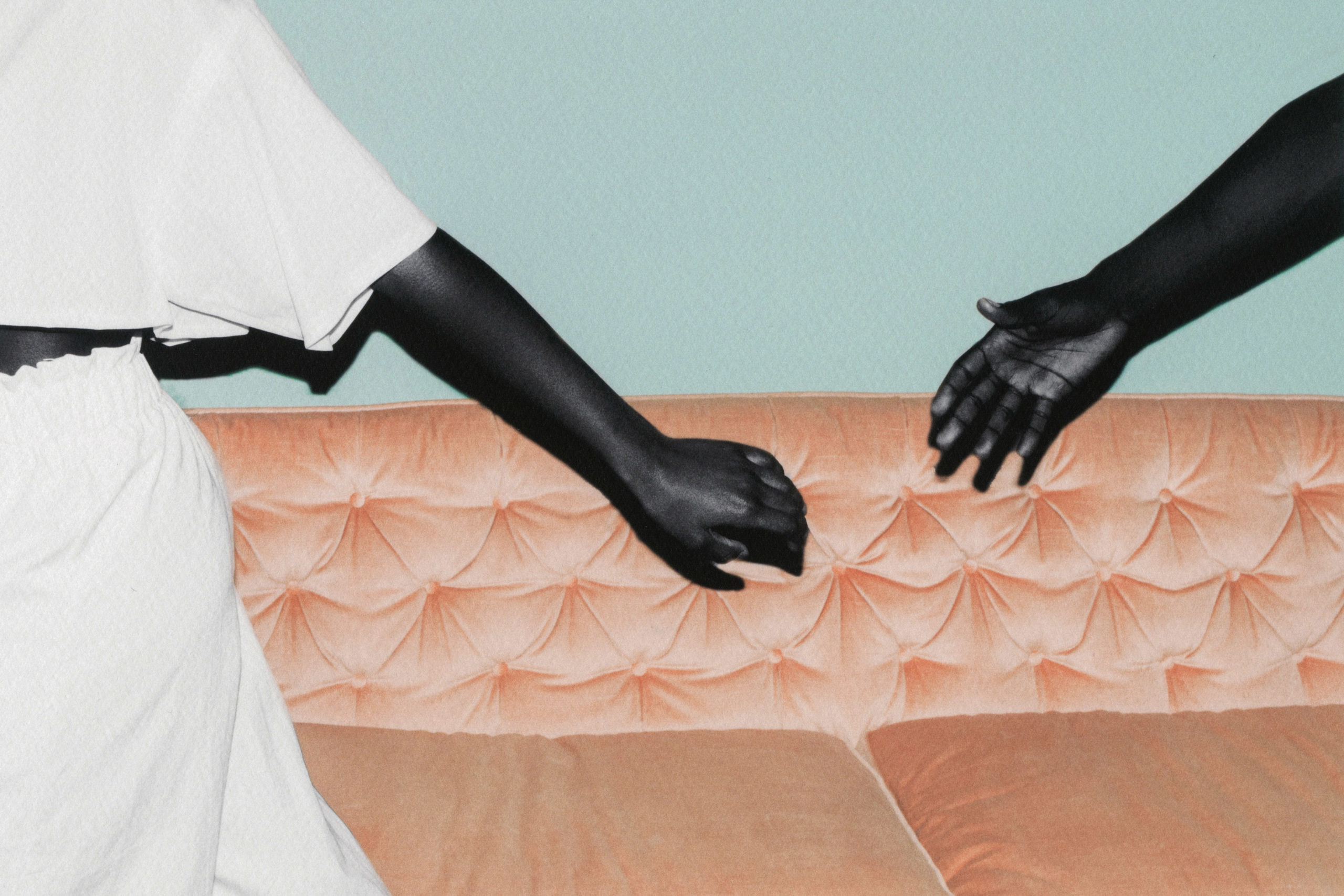 All the pain, all the tears.
All the pain, all the tears.
“This image is the first one I made for the series. I wanted it to feel like an Alex Gardner painting. A big experiment. We gathered at a friend’s house in Nashville to make it happen, and I didn’t know what to expect. Kelton is reaching for April’s hand as she is letting him go. We tried it a few times before I felt like we got an image that rendered enough tension. Post production was critical too, because I had to make them extremely black like the paintings. I named it after a Childish Gambino lyric because I was listening to his album Awaken, My Love! when the image was coming to life.”
———
 Myself No. 1
Myself No. 1
“I made this image on New Year’s Day 2021 in Philadelphia. It was the first time I felt like including myself in the series. I had just bought my new camera, the X-Pro 3, and I set it up on a tripod in a large mirror. The composition was strictly organized, and I made a lot of pictures of myself. This one seemed the most natural. I turn the camera on myself rarely, but always with intention.”
———
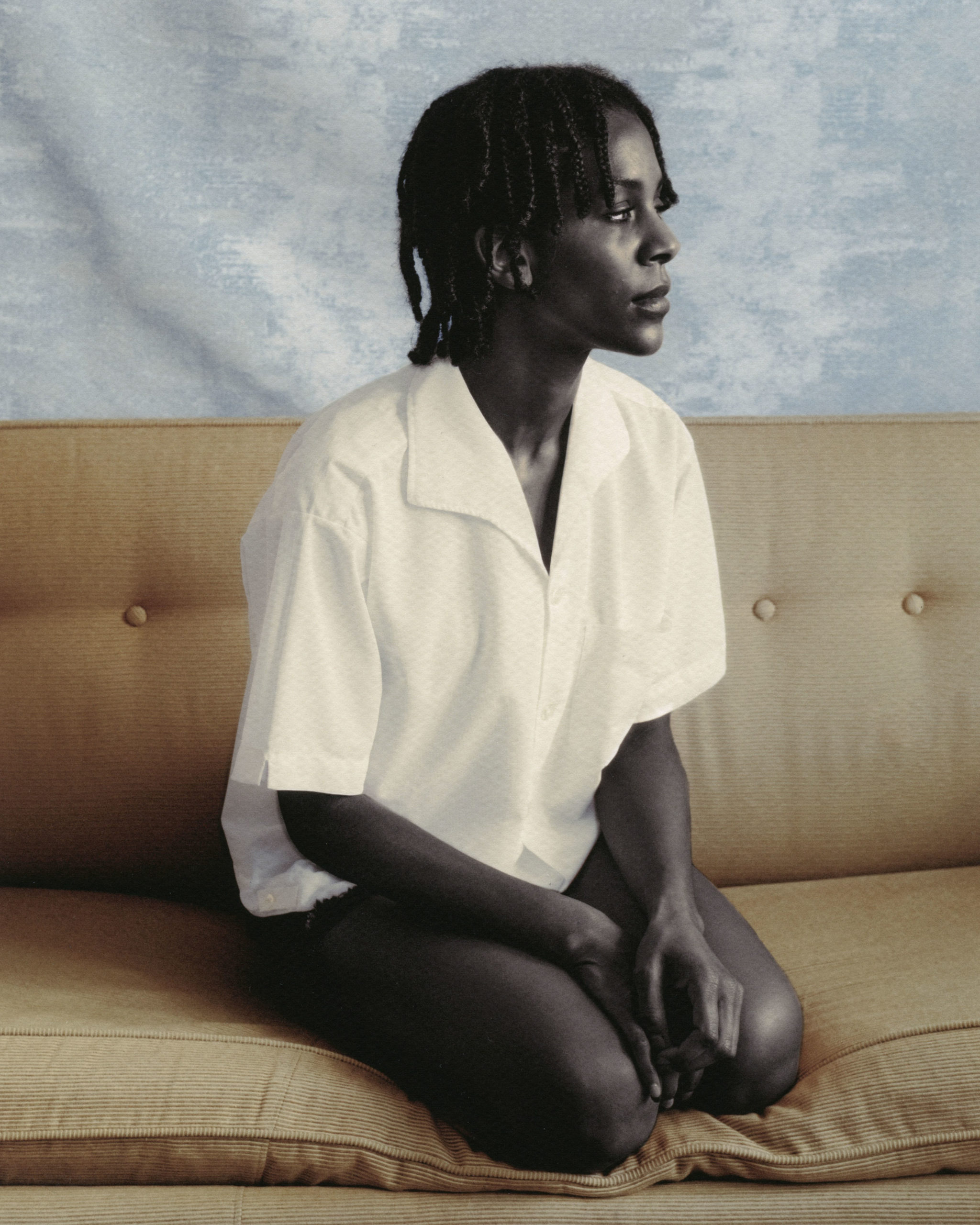 Amanda No. 4
Amanda No. 4
“Amanda has been a part of this series since I moved to the East Coast. This one is in her apartment in Brooklyn, and I set it up to compliment Aheem No. 1. She’s wearing her own shirt, and I just love the tones. It feels pleasantly textured to me. I wanted to move away from using the flash, and this resulted in a softer image. The icy textured fabric behind her head was placed there to further the painterly effect. She’s sitting still and just looking out of her window. To me, it’s a very calm image.”
———
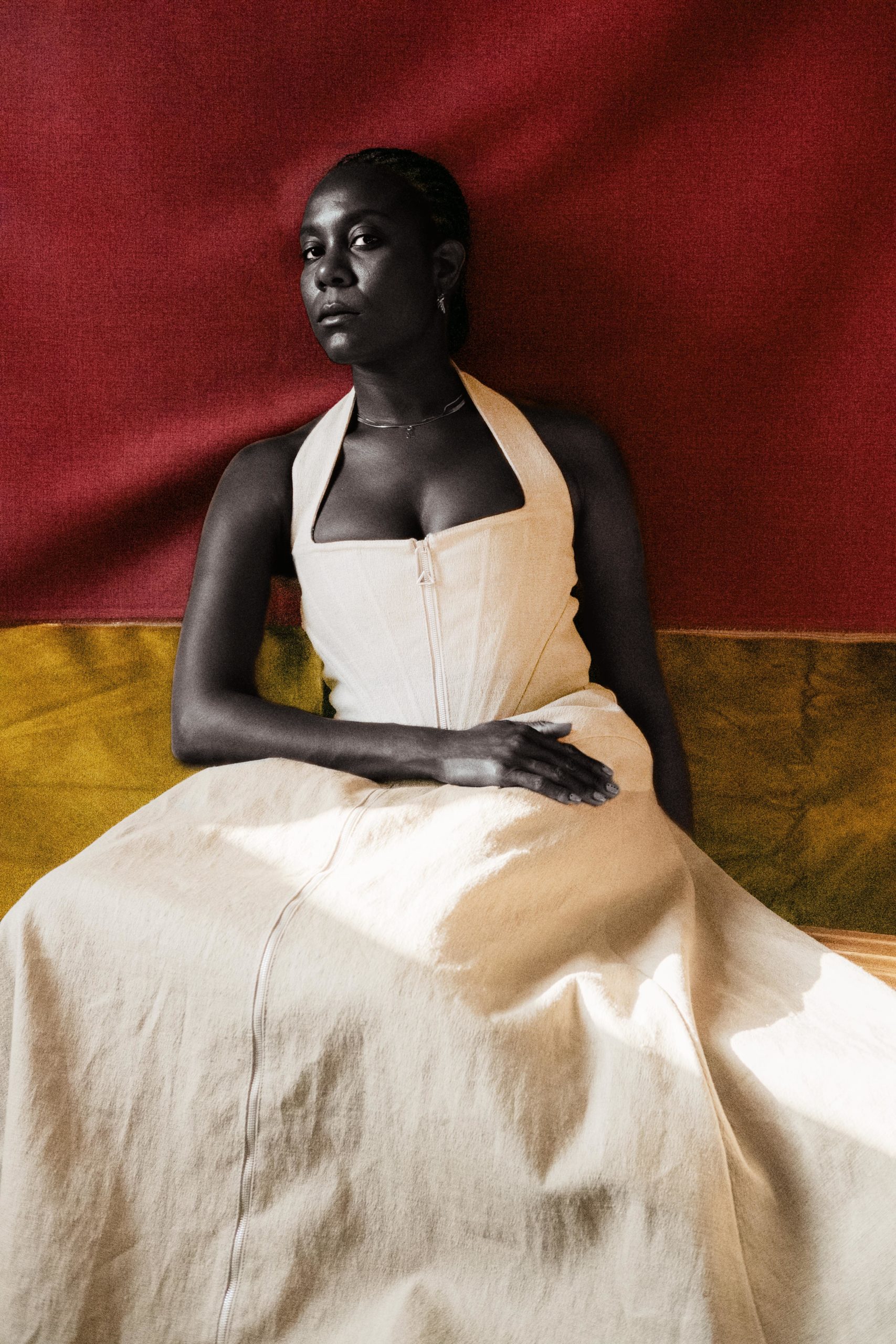 Portrait of a Stylist (Jess Willis)
Portrait of a Stylist (Jess Willis)
“One of my personal favorites. Jessica Willis, the New York stylist, is wearing her Bottega Veneta dress in her Brooklyn apartment. I was honored to make her portrait, considering her brilliant work in the fashion industry. I believe she is one of the best style directors of our time, and I wanted to immortalize her in this image. Part of what came to mind was the Michelle Obama portrait. I wanted to make something elegant and grand. Royal in a way. She told me she likes ‘jeweled colors’ and I feel we achieved that. Like most shoots for Figures of Color, it was just the two of us. No crew. It allows me to focus solely on the subject without any distractions. I think there is a quiet intimacy in some of the pictures because of that.”
———
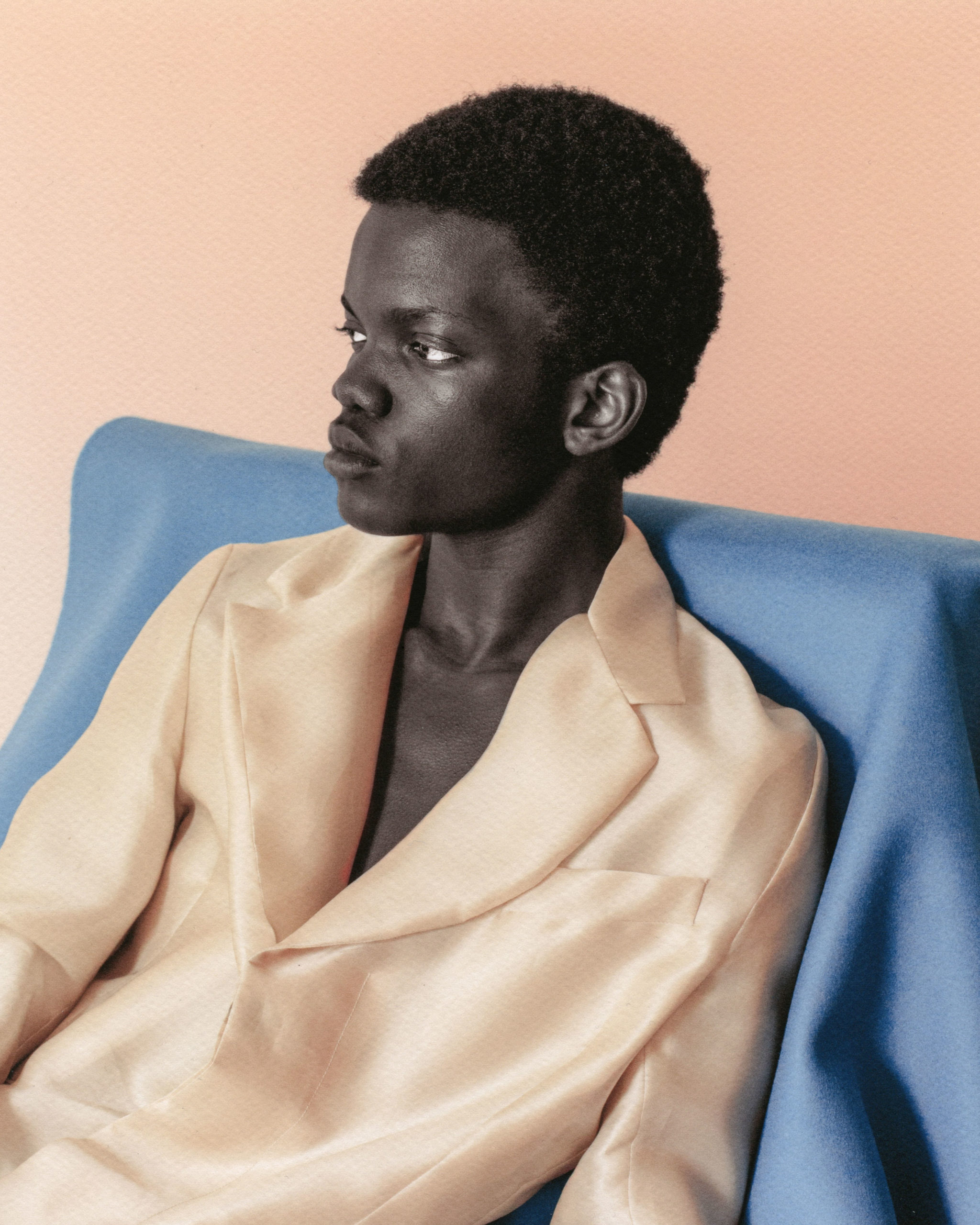 Aheem No. 1
Aheem No. 1
“This is the first image of Aheem. He’s wearing a Crombie coat designed by Duckie Brown. I met Aheem at an exhibition that my friend Cobey was having in New York. At first glance, I sensed an impeccable style and confidence with Aheem. I had to ask him if he wanted to be a part of the series. Steven Cox and Daniel Silver, the founders of Duckie Brown, let me use their studio and provided the pieces. I got to use their beautifully colored fabrics too. It was a wonderful moment of collaboration and I’m grateful for everyone’s trust.”
———
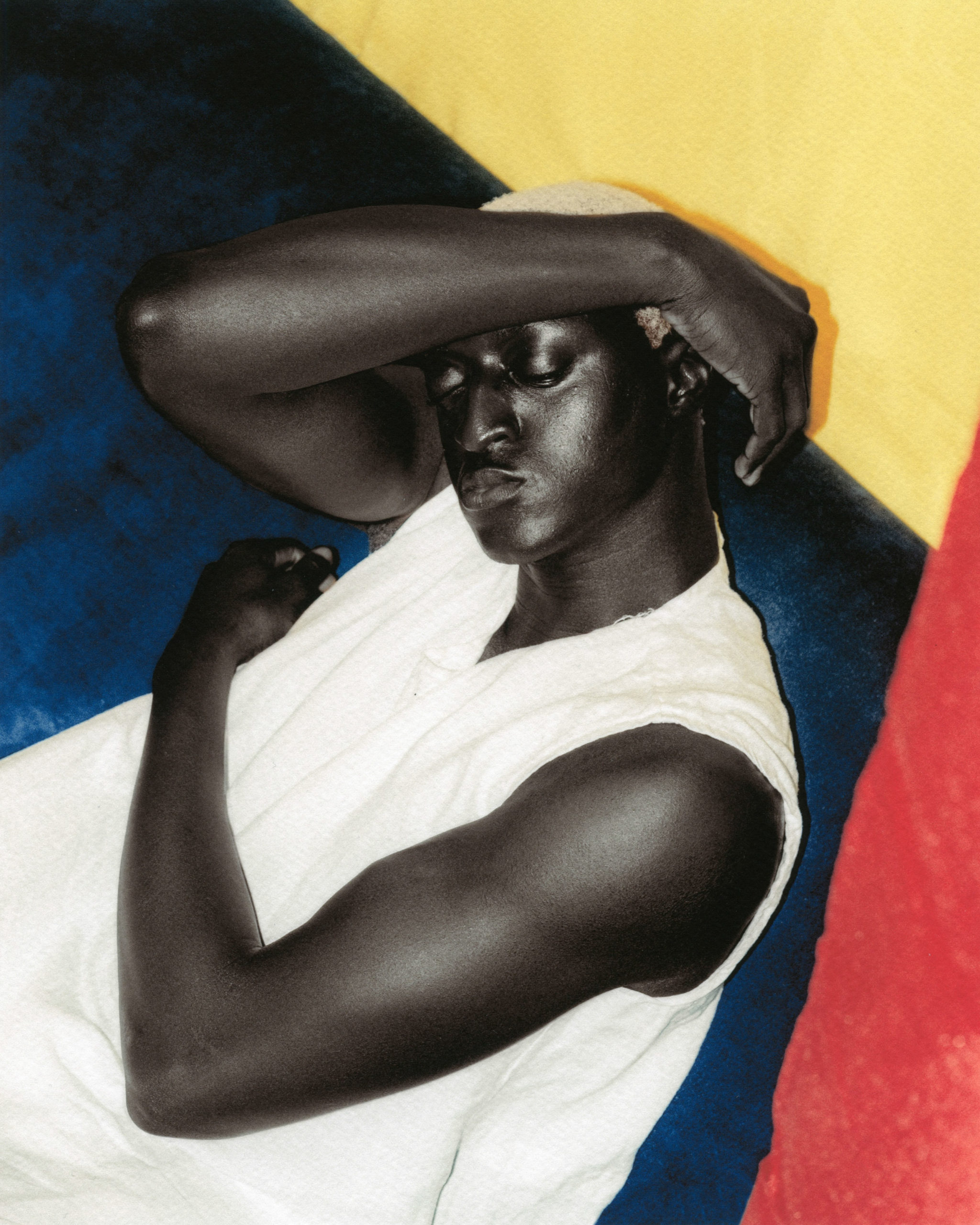 Awaken my friend
Awaken my friend
“This is an image of Hums in my friend Khira’s apartment in Brooklyn. I asked him to move his arms and find a position that feels comfortable. To me it almost looks like he’s sleeping peacefully. The blue is a couch that he’s sitting on, and the other primary colors are fabric. I shot it at a dutch angle to get the diagonal lines like a hard edge painting. I wanted that effect to be bold and direct. I think it’s beautiful how the light reflects off his skin in this image, and how the flash works to flatten out all the shapes. It’s almost like a logo, in my opinion.”
———
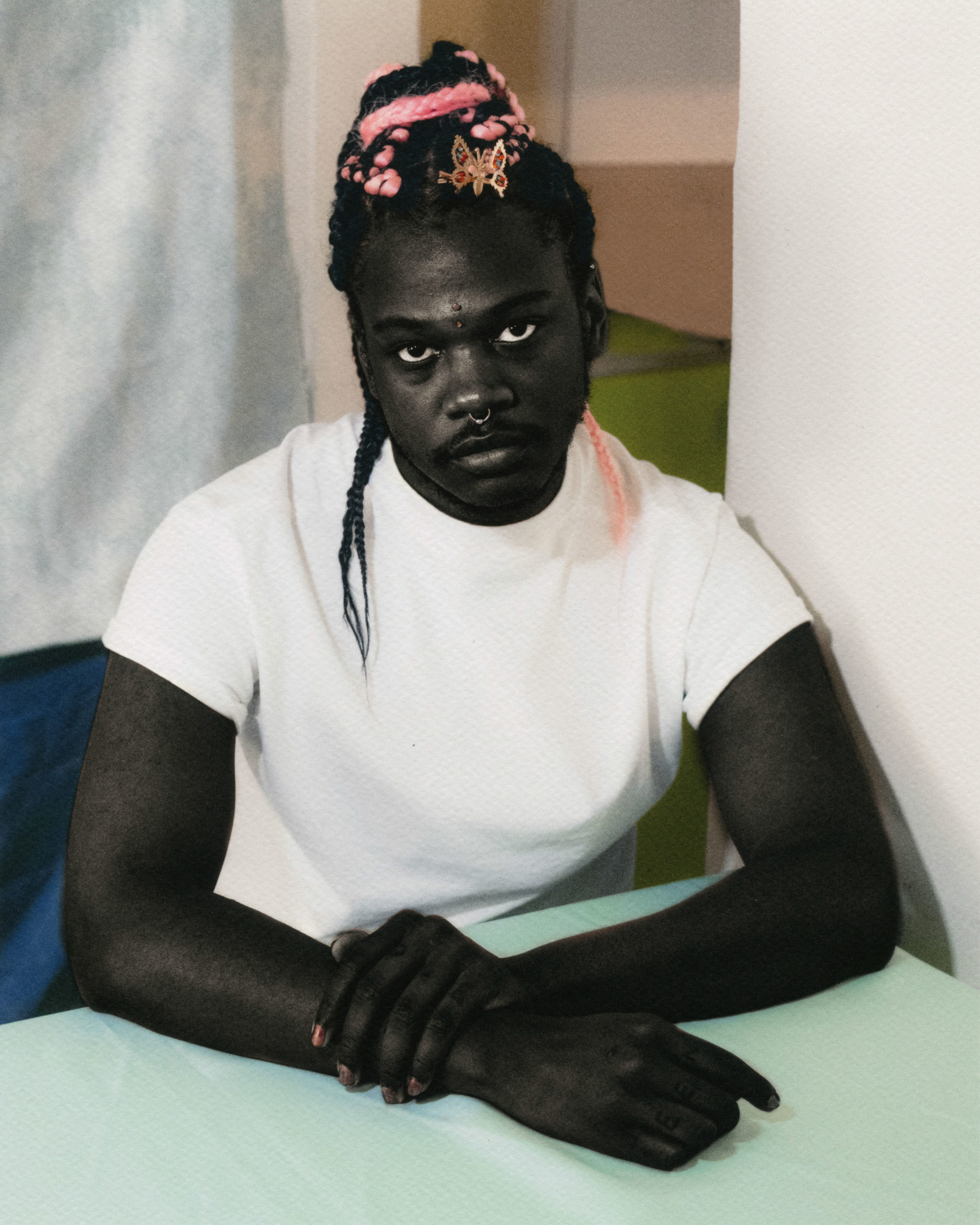 Seat at Shamir’s Table
Seat at Shamir’s Table
“This is a picture of my friend Shamir, a Philly-based musician. We made this image in Shamir’s apartment, and he is seated at his dining table. I draped fabric over it, creating a solid block of color. The butterfly piece in Shamir’s hair is important. After he was diagnosed with bipolar disorder, his mother called him ‘butterfly.’ That story is beautiful to me and it’s essential to the context of the picture.”
———
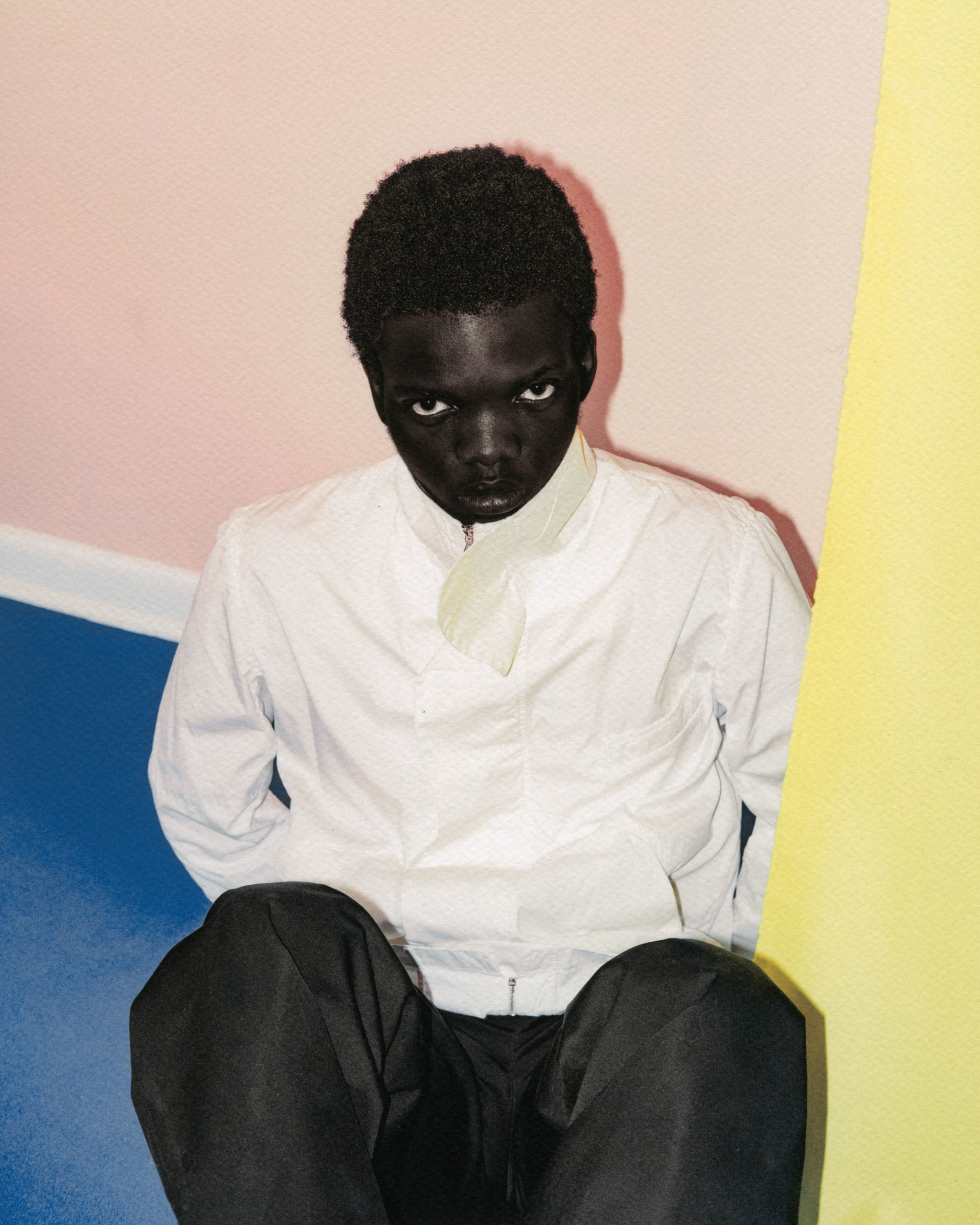 Aheem No. 9
Aheem No. 9
“This is one of the newer images of Aheem. The composition echoes the techniques from Awaken, my friend — with its hard edges and sharp changes of colors. I captured the whites in his eyes to add contrast to the deep blacks. Aheem is wearing Duckie Brown clothing, and he is in front of a wall that I painted myself. The color is called “Modern Love”, and it was very therapeutic to spend time painting the set. I spent the majority of the day painting multiple layers to get that color right. A pale pink is actually one of my favorite colors.”
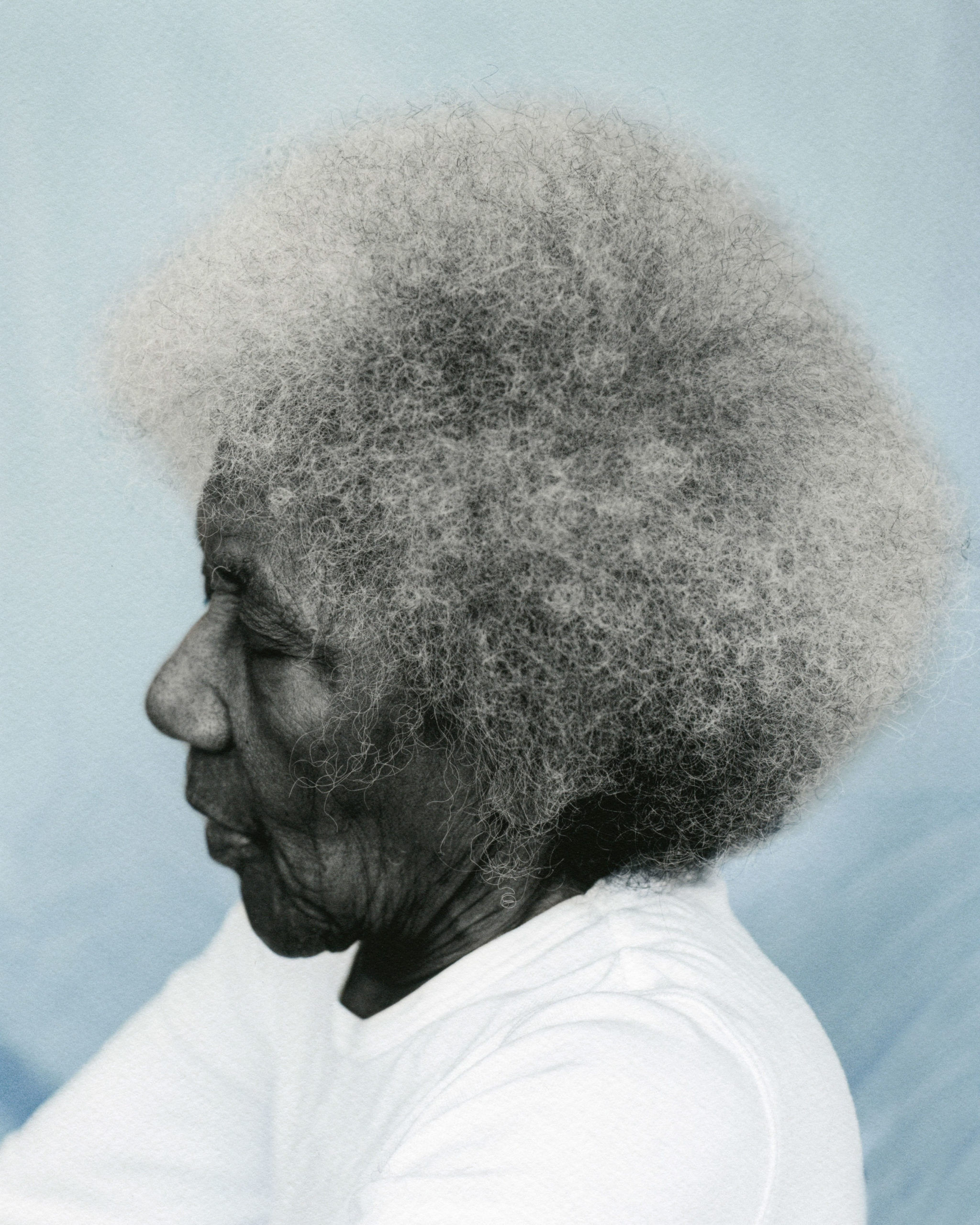 Connie No. 1
Connie No. 1
“I photographed Connie in her nursing home in New York. She is from North Hills, Pennsylvania, and is one of the first black women to graduate college in her town. Her job was training teachers to help them give better opportunities to disadvantaged people. Black people in that area were only maids and laborers, and she helped change that. Connie is a leader who helped Black people realize that they can move up in society to become professionals, lawyers, doctors, etc. By training teachers to help the disadvantaged, Connie changed the way Black people saw their own lives.”
———
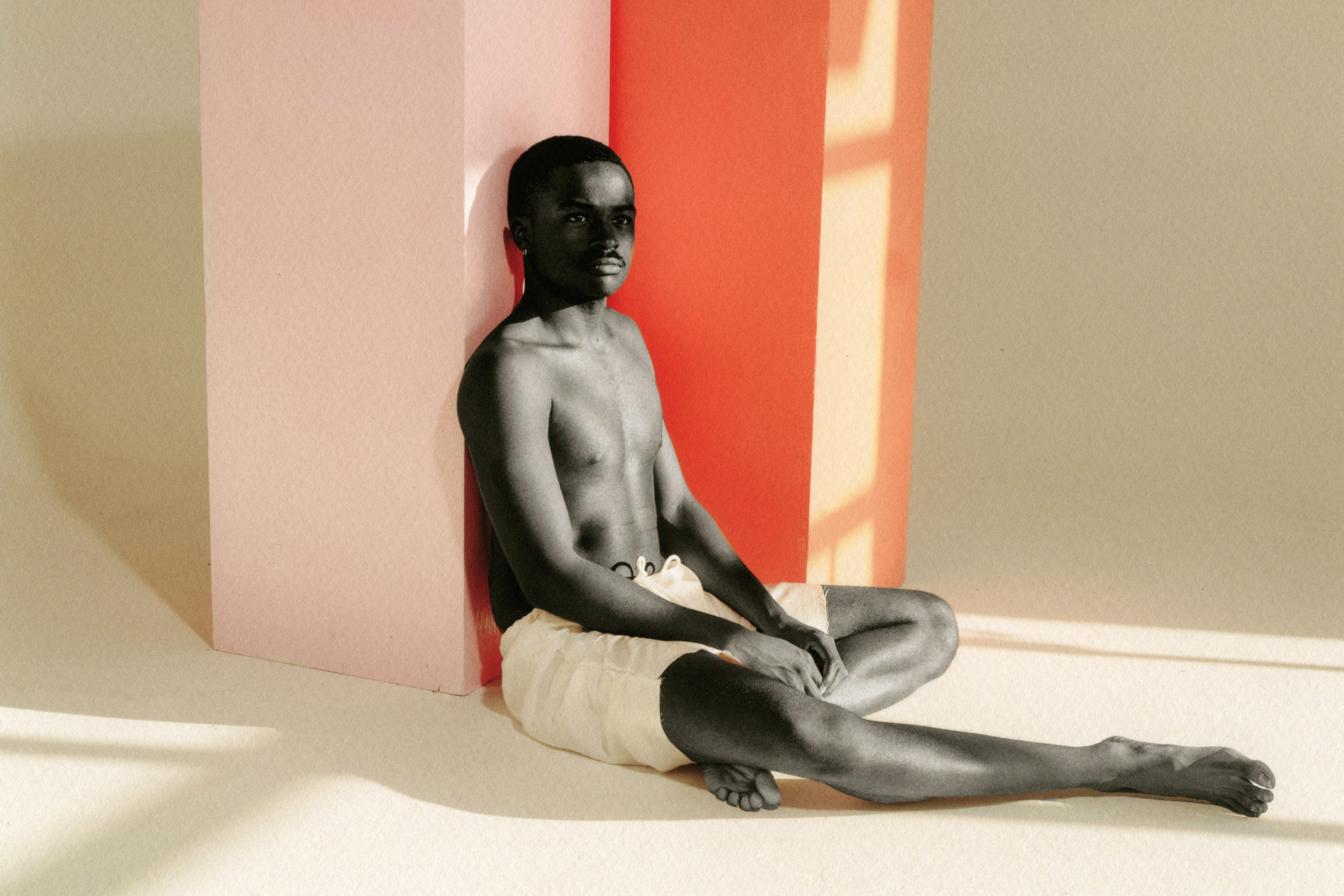 Ommahdi No. 1
Ommahdi No. 1
“Here is Ommahdi in 2018 in a studio in Nashville. This was the first image in the series to incorporate natural light and it produced great results. I painted those panels with the help of my friend Jamison. It was a long, active day involving a lot of Nashville creatives, and I believe that the most definitive picture from that session is this one. It reminded me that the best approach for this series is quiet intimacy, a sort of one on one collaboration between me and the subject.”
———
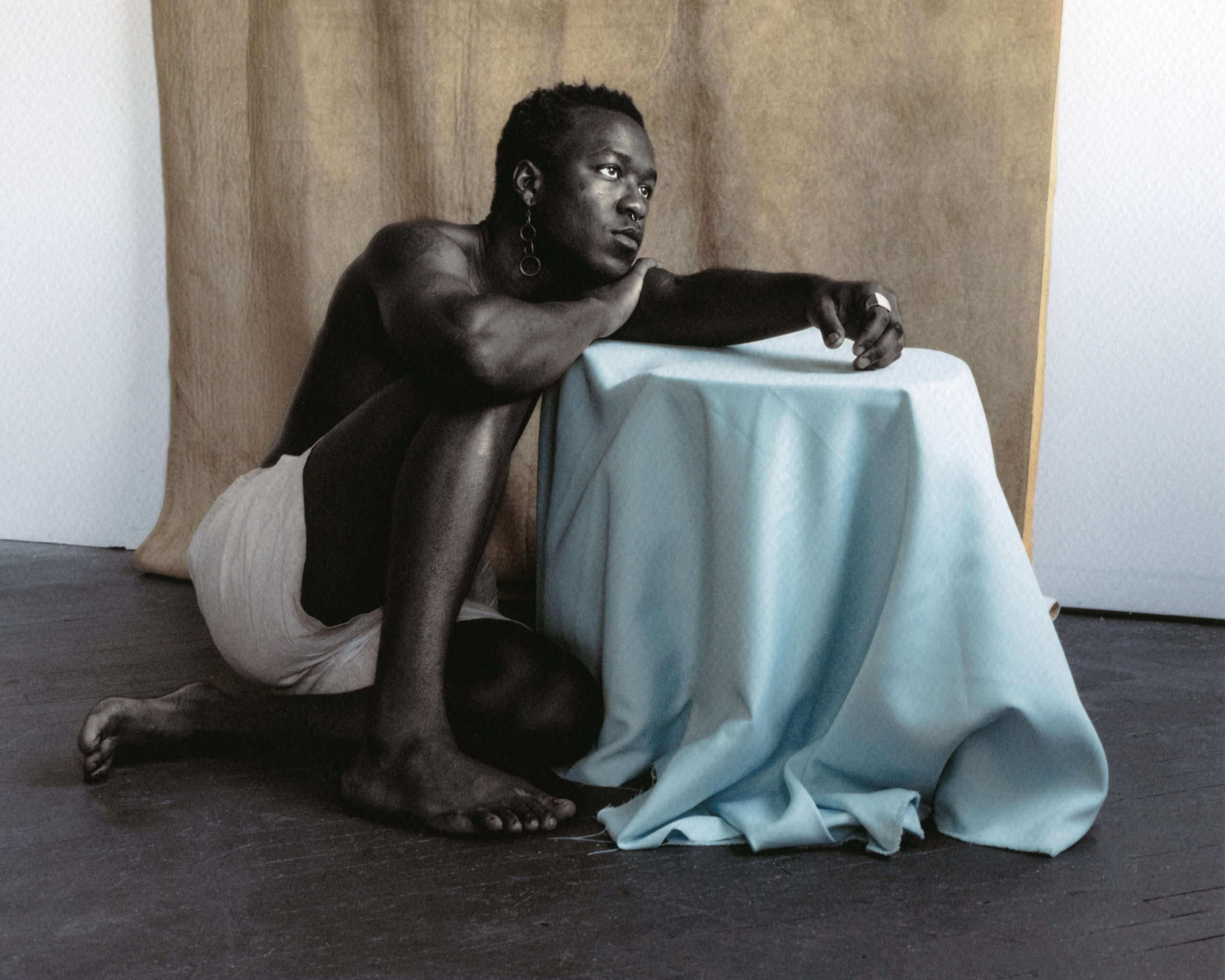 Khalib No. 1
Khalib No. 1
“I met Khalib on Instagram and asked them if they wanted to be a part of the series. I designed a set in the Vox Populi building in Philadelphia, and tried to continue the natural light approach. I always ask people if they can be barefoot for the shoot, because I want them to appear timeless like Greek statues. Seeing the separation of the Blacks between their skin and the floor is beautiful to me. I heard the Black painter Kerry James Marshall once say that he separates his blacks by changing the temperature of the pigments, so I tried to do the same here. It was one of those small shoots—just me and the subject.”
———
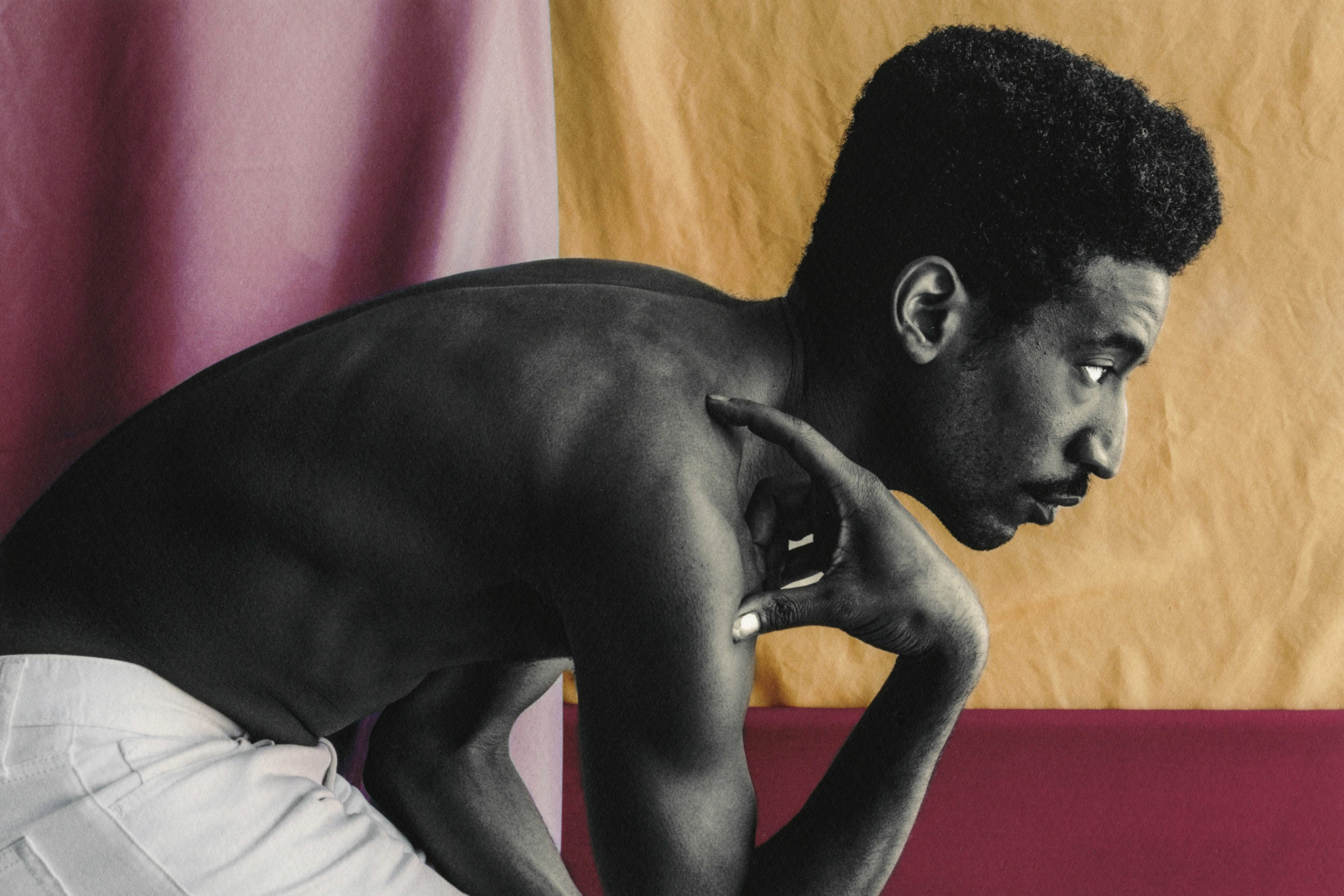 Jon Key No. 7
Jon Key No. 7
“This shoot was so much fun. I met Jon Key in his studio in New York after cold emailing him, which usually never works. I discovered his beautiful paintings, and thought he would be perfect for Figures of Color. I felt inspired by his use of color blocks, and wanted to create something similar with fabric. This shoot made me feel like I was practicing set design more than anything else. I was always asking myself, “What else can I do with fabric?” So, I created a sub-framing situation where Jon’s body is outlined by the shapes of the fabric. I wanted to make him look like his own paintings in a way. In fact, his large canvases were beside us as I was taking pictures, evoking a kind of synergy in the room.”

